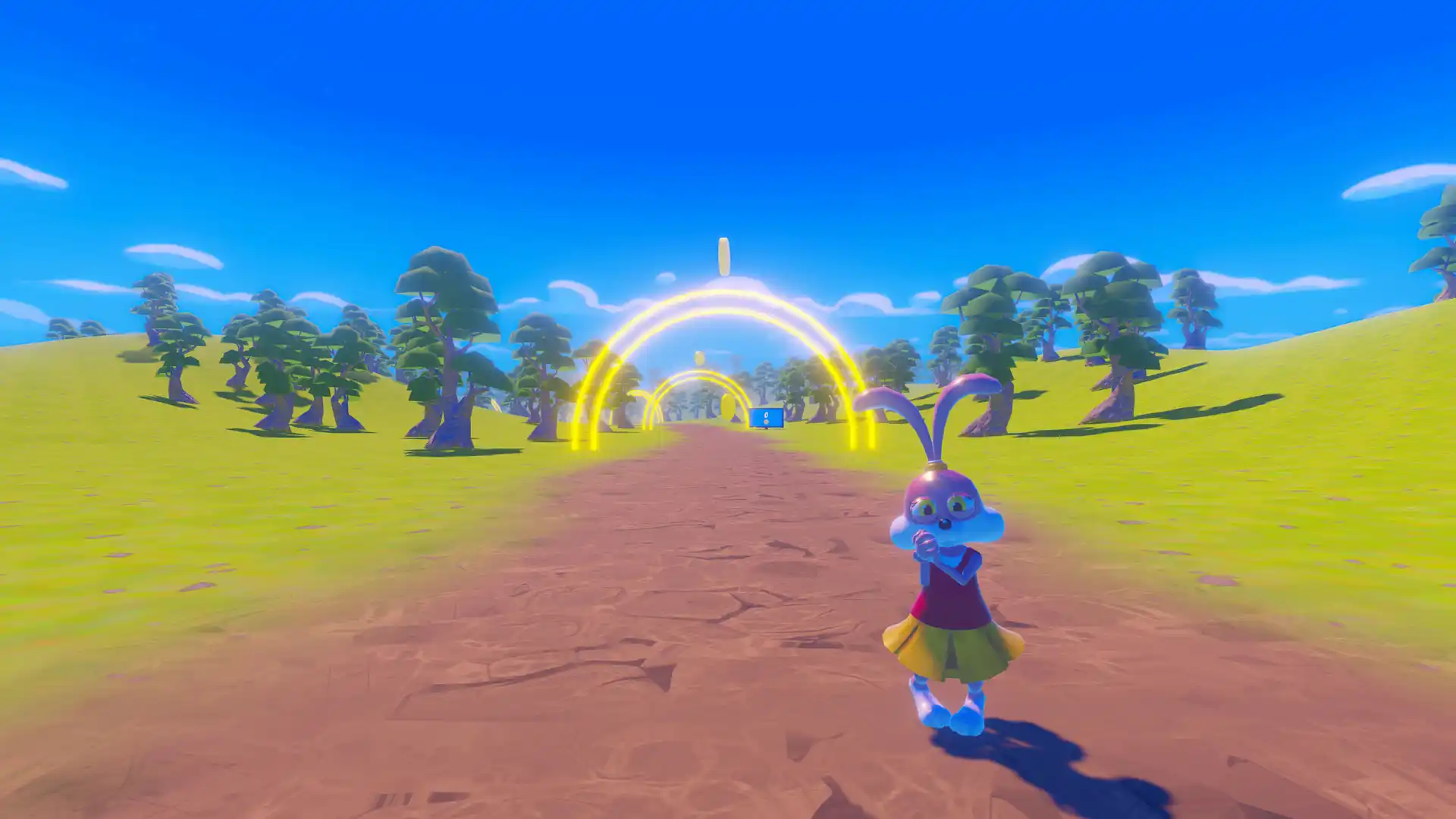VR Bunny Biking Companion
A VR exergame for children with disabilities that pairs stationary bike integration with an AI bunny companion offering verbal encouragement and motivation, in a low-sensory, stylized environment with accessible gameplay.




Introduction
- Overview: VR exergame designed to motivate and address the specific needs of children with cognitive and learning challenges. Players navigate a stylized virtual world using a stationary exercise bike, passing checkpoints, collecting coins, and receiving verbal motivation from an AI bunny companion, combining physical activity with immersive gameplay.
- Motivation: Developed for my bachelor project, based on academic research and in collaboration with physical therapists, the game was designed to facilitate a motivating exercise solution with focus on accessibility, low sensory load, and a companion-driven motivational system to engage the children without overwhelming them.
Key features
- AI bunny companion: Guides and motivates players through verbal encouragement, dynamic behaviors, and adaptive responses based on player performance.
- Stationary bike integration: Converts pedaling motion into forward movement in the VR world, translating real-world activity into in-game progress.
- Checkpoints: Visible goals on the path that serve as intermediate targets, guiding players through the level.
- Collectibles: Coins spawned when passing through rings serve as optional rewards, encouraging exploration and providing a sense of accomplishment.
- Looping levels: After completing a lap, players restart the course with refreshed collectibles, encouraging continued play.
- Dynamic feedback: The AI companion celebrates successes, encourages effort, and dynamically reacts to changes in player activity.
- Low-LOD environment: A nature-inspired environment with minimal detail to avoid overstimulation while maintaining visual appeal.
- Stylized graphics: A warm and approachable art style, enhanced with subtle post-processing effects for immersion.
Key challenges & solutions
1. Motivating players with adaptive AI feedback
- Challenge: Design and implement an AI companion that provides engaging and dynamic feedback to players.
- Solution: Implemented a finite state machine (FSM) with adaptive AI states (idle, follow, encourage, celebrate) that evaluate and respond to player actions. Each state features selectively randomized audio feedback and utilizes NavMesh pathfinding for realistic movement and interaction.
2. Integrating stationary bike motion into gameplay
- Challenge: Translate gyroscopic sensor data from a stationary bike into smooth, responsive in-game movement.
- Solution: Integrated a UDP-based script (not my own script) to receive pedaling data. Applied realistic acceleration and deceleration curves, mapping pedaling intensity to in-game speed for controlled and comfortable pacing.
3. Performance & avoiding motion sickness
- Challenge: Ensure player comfort in VR by minimizing motion sickness caused by low frame rates and stuttering.
- Solution: Optimized for 90 FPS using static batching, baked lighting, object pooling, and LODs. Reduced sudden movements and used smooth turning mechanics. Physics updates were synchronized with frame rendering to eliminate jitter. Fog reduced draw distance, enabling far object culling and simplifying visuals to create a comfortable experience for the target group.
4. Creating engaging environments for a sensitive audience
- Challenge: Design a visually appealing world while avoiding overstimulation for the target audience.
- Solution: Setup low-LOD environments using Unity terrain tool and stylized nature assets. Used balanced color grading and subtle fog effects to craft a warm, focused aesthetic tailored to the audience’s needs.
5. Ensuring dynamic and non-repetitive AI behavior
- Challenge: Preventing predictable or robotic actions in the AI companion.
- Solution: The companion adapts dynamically to the player’s behavior: if the player stops or slows down, it runs to the nearest checkpoint and encourages them to catch up. When biking slowly, the companion walks beside the player, urging them to pick up the pace. At higher speeds, it runs alongside, cycling through praise voice lines to maintain engagement and momentum. State-based randomization ensures varied voice lines and animations, avoiding repetition and keeping interactions lively.
6. Optimizing collectibles instantiation
- Challenge: Manage collectible coins efficiently to avoid performance drops.
- Solution: Implemented basic object pooling to dynamically spawn and recycle coins, reducing resource usage.
Impact
The exergame significantly improved exercise engagement, with 80% of participants increasing their time and distance compared to cycling without the game. Many participants, especially older students and gamers, found the activity more enjoyable due to the bunny companion’s encouragement. The project successfully demonstrated the potential of gamification and NPC-driven interactions to motivate exercise in children with disabilities. The project reached its academic objectives and received a top grade.